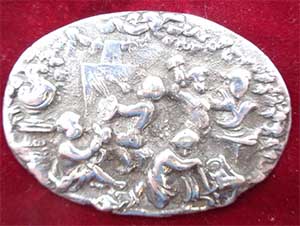
The Arts and Crafts movements emerged in the 1860s and lasted up until the first decades of the 20th century. Ideologically and stylistically, it was a continuation of the Aesthetic Movement but with an emphasis on traditional crafts. Thanks to the recognition of artisan skills and dedication to nature, Arts and Crafts antiques are the epitome of harmony, genuineness, and hand-craftsmanship.
The movement started as a reaction to the pretentious and ornate styles of the Victorian era. Criticizing machine-made products and exaggerated decor, Arts and Crafts put the beauty of nature and the true value of handicrafts to the fore. The adherents of the movement glorified traditional manufacturing techniques believing that the replication of consumer goods destroyed their beauty and individuality.
The ultimate goal of the Arts and Crafts movement was to produce designs ‘by people and for people’. Its ideal was a harmonious living space that combined the creativity of nature and contribution from skilful craftspeople. By and large, the movement attempted to achieve its ideal by joint efforts of architects, artists, artisans, and designers.
Continue reading Arts and Crafts Antiques Buying Guide